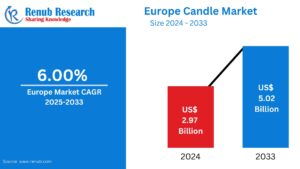Reading this blog and deciding to start a website based on this available information might not be sufficient. But I promise that it would be a great start. So let’s understand it together. Developers keep coming up with new technologies to enhance their projects. As the topic of discussion, it’s ubiquitous about MEAN stack development usage for major web projects. A stack means all technologies that make it MongoDB, Express.js, Angular, and Node.js will be used within one project from the database, to frontend to the backend of the application. So this makes a pretty much complete software development methodology that takes care of all aspects of the application like a full stack developer.
- MongoDB is a NoSQL document-oriented database
- Express.js is a lightweight Node.js framework for building web application backends
- Angular is a powerful JavaScript framework for building dynamic and interactive front-ends with a component-based architecture.
- Node.js is a runtime environment for JavaScript, enabling server-side execution and real-time applications.
This order remains the same for better understanding. Throughout this blog, we will keep repeating these keywords to illustrate their features, functionalities, use cases, examples, etc.
Architecture, basic building block
For MEAN stack everything falls in between a client computer and receptors. (Angular) handles the front-end logic and user interface, sending HTTP requests to the server. (Node.js) and (Express.js) manages the server side, processing requests and interacting with the (MongoDB) database. This stack is suitable for developing dynamic (1) web applications, (2) single-page applications, (3) cloud-native applications, (4) CMS development, (5) API integration, and (6) e-commerce development.
It simplifies development and maintenance by using a single language. It facilitates rapid development; is scalable and can handle large amounts of data. It is suitable for cloud-based applications.
MERN stack including MongoDB, Express.js, React, Node.js replaces Angular with React for the frontend. The primary benefit of MEAN is that it leverages JavaScript across the entire stack, from front-end to back-end, allowing developers to write code in a single language for consistency and improved development speed. Node.js’s non-blocking I/O model enables efficient handling of concurrent requests, making it ideal for building high-traffic applications that scale seamlessly. The extensive JavaScript community provides ample support, libraries, and frameworks, simplifying development and troubleshooting. With MEAN, developers can quickly build prototypes and iterate on features due to the streamlined workflow and readily available components.
With MEAN stack development, developers can work on both front-end and back-end aspects of an application using a single language, leading to a more cohesive development process. With Angular’s component-based architecture, developers can reuse code across different parts of the application, improving development efficiency. Node.js’s event-driven nature excels in building real-time applications like chat systems and collaborative tools. Express.js facilitates the creation of robust and well-structured RESTful APIs, crucial for modern web applications. Applications built by MEAN stack development company can run seamlessly across different operating systems and devices.
What can be created with MEAN Stack?
E-commerce Platforms because of its ability to handle large volumes of transactions and product data makes MEAN suitable for online shopping platforms. (2) Social Networking Websites because it has real-time features like chat and live updates can be efficiently implemented using Node.js. (3) Content Management Systems as MEAN can power dynamic content-driven websites with user-friendly interfaces. (4) Single-Page Applications because Angular’s capabilities shine in building rich and interactive SPAs with smooth user experiences. (5) Data-Intensive Applications as MongoDB’s flexible schema design is advantageous for applications requiring complex data structures.
Additional points to take care of while choosing MEAN Stack for web app development
While JavaScript is widely used, mastering the full MEAN stack may require a steeper learning curve for developers new to the technology. For highly complex applications, additional frameworks or libraries may be needed to enhance functionality. JavaScript is used across the entire application, reducing the need to learn multiple languages and simplifying development. Node.js’s event-driven architecture allows high volumes of concurrent requests, making MEAN suitable for large-scale applications. MongoDB’s document-oriented database structure offers flexibility in data modeling, especially for rapidly evolving data structures.
Revisiting this topic as it holds crucial importance
The top alternatives to MEAN Stack are:
- MERN Stack (MongoDB, Express.js, React, Node.js) as it replaces Angular with React.js, a more lightweight and component-based front-end library. It is Ideal for projects requiring rapid prototyping, highly interactive UIs, and a large community of React developers.
- MEVN Stack (MongoDB, Express.js, Vue.js, Node.js) uses Vue.js as the front-end framework, known for its flexibility and component-based architecture. It is ideal for smaller bundle sizes compared to Angular or React, leading to faster page loads. It is easy to integrate with existing projects due to its gradual adoption approach. It is great for smaller to medium-sized applications.
- JAMStack (JavaScript, APIs, Markup) focuses on static site generation with serverless functions for dynamic content, providing fast loading times and improved performance. It features excellent Search Engine Optimization due to pre-rendered HTML pages. It is highly scalable with cloud-based serverless functions. Also, it is ideal for content-heavy websites and blogs.
- Next.js is a full-featured React framework with built-in features for server-side rendering, routing, and data fetching. It features improved performance with automatic static optimization. It streamlines the development process with built-in features. Also, it is well-suited for complex React applications.
- Ruby on Rails A full-stack framework using Ruby as the programming language, known for its convention over configuration approach. It features rapid development with pre-built components and scaffolding, has a large community and extensive ecosystem, and is ideal for complex web applications where time to market is critical.
When everything is in place, what’s stopping you?
The best alternative for your project depends on your specific requirements, team expertise, and project goals: For rapid development with a large developer community consider MERN or MEVN, especially if your team is already familiar with React or Vue.js. For high-performance and SEO-optimized static sites explore JAMStack with a static site generator like Gatsby or Next.js. For complex enterprise applications with strong data modeling needs evaluate Ruby on Rails for its robust features and mature ecosystem. If you prioritize a unified JavaScript experience and need a strong front-end framework stick with MEAN, particularly if your team has substantial Angular expertise.
Folding the Discussion
Get this without a second thought if you wish to build dynamic and interactive web applications; also in case you wish to develop real-time applications with high concurrency; also for projects requiring rapid development cycles and flexibility, and teams with existing JavaScript expertise. Using mongodb for the database, express.js for the backend, Angular.js for the frontend, and Node.js again for the backend – MEAN Stack development services efficiently handle high traffic and concurrent requests suitable for large-scale applications. It can also be used to create simple APIs. Rapid prototyping, troubleshooting, and a quick development cycle provide ample amount of support.






